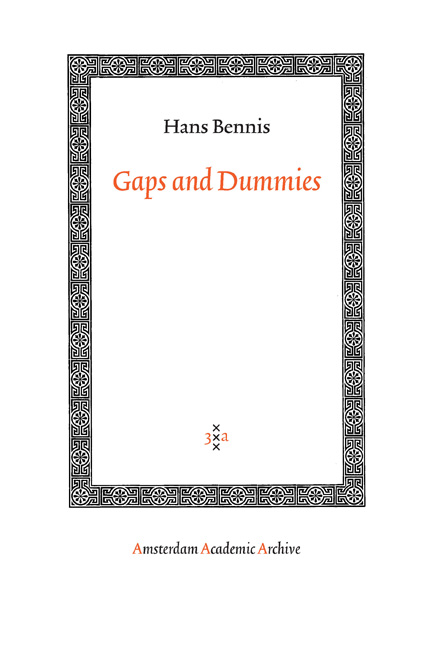3 - The Adverbial Pronoun Er
Published online by Cambridge University Press: 20 January 2021
Summary
Introduction
In the previous chapters. the pronoun er and the class of R-pronouns was introduced at several points. In this chapter I shall focus on the pronoun er mainly in relation to its so-called dummy-pronoun status. The dummy-pronoun appearance of er is only one of the many possible functions of er. I shall argue that in all its uses er is an adverbial pronoun that may enter tnto a variety of syntactic relations. In some sense the spirit of this chapter is similar to that of the preceding one. Het was argued to be a referential NP in all cases. This was seen to be particularly relevant with respect to its so-called dummy use. The analysis of er as an adverbial pronoun is in fact the traditional view. as put forth in the Bech's(1952) article ‘Ueber das niederländische Adverbialpronomen er'. Thi.s analysis differs from most. if not all. recent analyses of er. These generally take the different syntactic functions of er as an indicati.on or motivation for the existence of several distinct pronouns which may vary in their categorial status and inherent syntactic properties. A different view in a completely different framework is expressed in Kirsner (1979). Basing his account on the conception that one form should correspond to one function/meaning. he argues in favour of a unificatory analysis of er that is based on the idea that the meaning of er is constant and can be described as presentational. I agree with Kirsner that an optimal theory of er should relate all occurrences of er. I do not agree with him that such a unificatory approach should necessarily be based on a particular meaning of er that is present in all specific instances. It can be argued that er possesses inherent properties which allow er to appear in a variety of syntactic constructions. Differences between distinct occurrences of er should then be considered to follow from the distinct syntactic relations and not from the appearance of different pronouns which happen to have the same surface realization. Paradigmatical as well as syntagmatical differences can be observed, such as the possibility of substitution of er by other R-pronouns and the maximal domain within which the syntactic relation in which er participates holds.
- Type
- Chapter
- Information
- Gaps and Dummies , pp. 171 - 258Publisher: Amsterdam University PressPrint publication year: 2005



